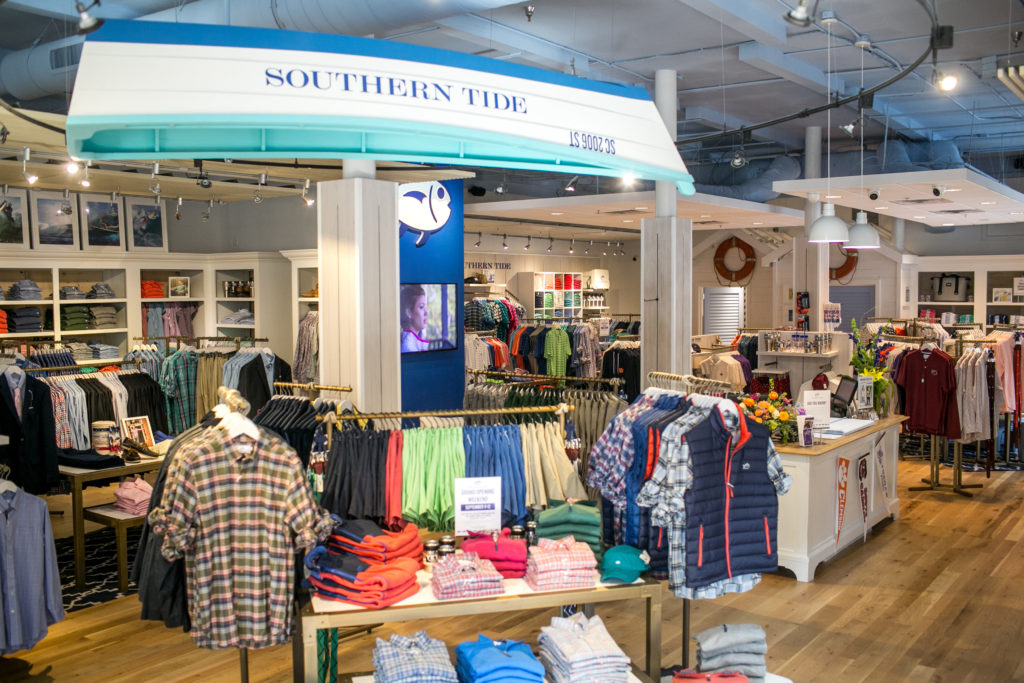SOUTHERN TIDE KEEPS ROLLING ALONG


Just as you don’t have to be Jewish to love Levy’s rye bread, you don’t have to be Southern to love Southern Tide. Originally founded in 2006 in Greenville, South Carolina by Allen Stephenson and now owned by Oxford Industries, this ultra-popular lifestyle collection is currently sold in 850 specialty retailers and premium department stores across 45 states, along with three Southern Tide signature stores. (The company is also currently expanding its women’s line under recently hired women’s design director Jessica Zaro.)
MR checked in with its CEO, Christopher Heyn, and creative director Craig O’Brien (a 15-year-veteran of Vineyard Vines) to discuss their business philosophy, the details of the brand’s fall collection and their continuing belief in their retail strategy.
MR: How would you describe the general outlook and philosophy for the company?
CHRISTOPHER HEYN: We’re committed to progressing, not regressing, while still staying true to our DNA. We may be sold all over the country, but we were born in the South. So we don’t want to ever forget our heritage. One of the big reasons we brought on Craig was to keep on adding to our foundation. Of course, we both realize we have to offer more than tattersall or graphic checks. We have to give our customers the new versions of traditional, especially as they get older. We are growing into becoming more of a lifestyle brand. We’re also looking to produce items such as button-down shirts and focusing on pieces with a more tailored fit. We need to serve the customer who is older than our target group but who wants to feel like they’re part of that world. On the other hand, our clientele is mostly still in their 20s, so we also still need to be making clothes for fun times.

MR: How does that specifically translate into the clothes you designed for fall?
CRAIG O’BRIEN: Our main focus was to view the season more as an extension of summer. So the fabrics are lightweight and colorful with a mix of cotton slubs, garment dyed knits and traditional woven yarn dye patterns in both performance and soft cotton stretch fabrics. They are perfect for those last boat trips or beach bonfires of the season.
As we progress later into fall, we will offer some textured mid-layer knits and introduce our new 5-pocket cotton stretch Harbor pant. We also focused our efforts updating our technical outerwear offerings to include a full waterproof and breathable stretch rain jacket which is complemented by a lightweight, packable primaloft fill quilted vest in two solid colors and a printed “feather” Camo pattern.
Finally, with the advancement of technical fabrics driving the market today, we are particularly excited to expand the Intercoastal Collection, which is shirting made from new performance woven yarn dye fabric that is at home on and off the water, and everywhere in between. With its stretch comfort, wicking qualities and great colorful patterns, it is made to carry our guy through any part of his life.
MR: Do you think your current retail strategy is still working?
CH: I strongly believe in unified commerce, which means our goal is to achieve the right balance of specialty stores, department stores, resort shops and omnichannel retailers. The old bricks-sticks-and-clicks formula. For us, the most important thing is to work with people who can tell our story the right way. Those are the only people we want to do business with.
MR: So why did you go into the retail business?
CH: We don’t actually own the stores, but we are working with an experienced retail operator who keeps us involved in presenting the brand and how product is selling. Our goal with this cocnept was to test product in a way that allows us to really understand our customer’s desires, wants and needs. I believe the best way to become a better wholesaler is to really understand what is working at retail.

CH: I don’t see this mass migration into e-commerce so quickly. What we do see that people are doing a lot more cross-shopping, which means they’ll come in with a catalogue but buy the actual item in the store. With many of our traditional brick-and-mortar retailers, we make sure there’s inventory available to them in store. We think our customers still like to go into a store to buy because apparel can still be a very emotional purchase.
MR: How do you feel about today’s promotional-heavy retail climate?
CH: We try to police our partners – which we means we watch out for promotions like a hawk. We absolute don’t want to dilute the brand through too much promotion. As I see it, increased activity in promotion simply means we didn’t do it the right way on the retail chain, whether that means we didn’t put out the right product or we didn’t market it properly. It’s only when that happens that you have to build artificial demand through blowing the whistle of price promotion.

